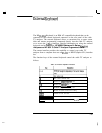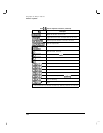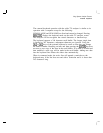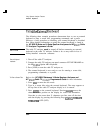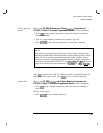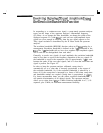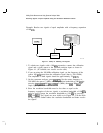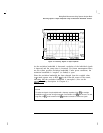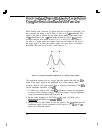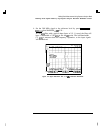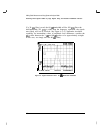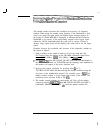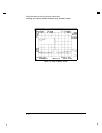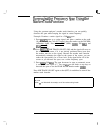
I
-
I
-
Making Basic Measurements Using Spectrum Analyzer Mode
Resolving Signals of Equal Amplitude Using the Resolution Bandwidth Function
Example: Resolve two signals of equal amplitude with a frequency separation
of 100
kHz.
I
I
CAL
OUT
/
L
COUPLER
Figure 4-1. Set-Up for Obtaining Two Signals
INPUT
pul17c
1. To obtain two signals with a 100
kHz
separation, connect the calibration
signal and a signal source to the spectrum analyzer input as shown in
Figure 4-1. (If available, two sources can be used.)
2. If you are using the 300 MHz calibration signal, set the frequency of the
source 100
kHz
greater than the calibration signal (that is, 300.1 MHz).
The amplitude of both signals should be approximately 29
dBmV.
3. On the spectrum analyzer, press
CPRESET].
Set the center frequency to
300 MHz, the span to 2 MHz, and the resolution bandwidth to 300
kHz
by
pressing
CFREQUENCY)
300
INIHz_),
m
2 (MHz), then
[Bw)
300
IkHz).
A
single signal peak is visible.
4. Since the resolution bandwidth must be less than or equal to the
frequency separation of the two signals, a resolution bandwidth of 100
kHz
must be used. Change the resolution bandwidth to 100
kHz
by pressing
lew]
100
(kHz.
Two signals are now visible as in Figure 4-2. Use the knob
or step keys to further reduce the resolution bandwidth and better resolve
the signals.
4-4



